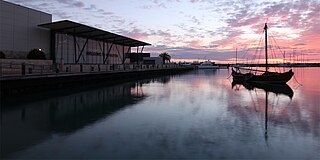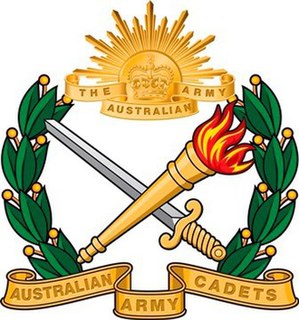
The British Army is the principal land warfare force of the United Kingdom, a part of British Armed Forces. As of 2020, the British Army comprises just over 78,880 regular (full-time) personnel and just over 30,020 reserve (part-time) personnel.

The Australian Defence Force (ADF) is the military organisation responsible for the defence of Australia and its national interests. It consists of the Royal Australian Navy (RAN), Australian Army, Royal Australian Air Force (RAAF) and several "tri-service" units. The ADF has a strength of just over 85,000 full-time personnel and active reservists and is supported by the Department of Defence and several other civilian agencies.

The Canadian Army is the command responsible for the operational readiness of the conventional ground forces of the Canadian Armed Forces. As of 2020, the Canadian Army has 23,000 regular soldiers, 19,000 reserve soldiers, for a total of 42,000 soldiers. The Army is also supported by 3,000 civilian employees from the civil service. It maintains regular forces units at bases across Canada, and is also responsible for the Army Reserve, the largest component of the Primary Reserve. The Commander of the Canadian Army and Chief of the Army Staff is Lieutenant-General Wayne Eyre.

Geraldton is a coastal city in the Mid West region of the Australian state of Western Australia, 424 kilometres (263 mi) north of the state capital, Perth.

The Australian Army Reserve is a collective name given to the reserve units of the Australian Army. Since the Federation of Australia in 1901, the reserve military force has been known by many names, including the Citizens Forces, the Citizen Military Forces, the Militia and, unofficially, the Australian Military Forces. In 1980, however, the current name—Australian Army Reserve—was officially adopted, and it now consists of a number of components based around the level of commitment and training obligation that its members are required to meet.

Royal Air Force Cranwell or more simply RAF Cranwell is a Royal Air Force station in Lincolnshire, England, close to the village of Cranwell, near Sleaford. Among other functions, it is home to the Royal Air Force College (RAFC), which trains the RAF's new officers and Aircrew. The motto, Altium Altrix, meaning "Nurture the highest" appears above the main doors of the Officers Mess. RAF Cranwell is currently commanded by Air Commodore Suraya Marshall

The NORFORCE is an infantry regiment of the Australian Army Reserve. Formed in 1981, the regiment is one of three Regional Force Surveillance Units (RFSUs) employed in surveillance and reconnaissance of the remote areas of Northern Australia. It consists of a regimental headquarters, four surveillance squadrons, and an operational support squadron and training squadron.

Cunderdin is a town located in the Wheatbelt region of Western Australia 156 km east of Perth, along the Great Eastern Highway. Due to it being on the route of the Goldfields Water Supply Scheme it is also on the Golden Pipeline Heritage Trail. It is a rural community consisting of a district high school and an agricultural college.

This article describes the current structure of the Australian Army. It includes the army's order of battle and the headquarters locations of major units. Members of the Australian Army also serve within joint units of the Australian Defence Force which fall outside the direct command of the Australian Army.

The Australian Army Cadets (AAC) is the youth military program and organisation of the Australian Army, tasked with supporting participants to contribute to society, fostering interest in Defence Force careers, and developing support for the Force. The program has more than 19,000 Army Cadets between the ages of 12 and 20 based in more than 200 units around Australia. The values of the AAC are "Service, Courage, Respect, Integrity and Excellence".

The 9th Brigade is a Reserve formation of the Australian Army headquartered at Keswick Barracks in Keswick, South Australia, with elements located in Tasmania, New South Wales and South Australia. The brigade was first raised in 1912 in New South Wales following the introduction of the compulsory training scheme. During World War I, the brigade was formed as part of the First Australian Imperial Force in 1916, with the majority of its recruits coming from New South Wales. It was assigned to the 3rd Division, and training was carried out in the United Kingdom before the brigade was committed to the fighting on the Western Front in November 1916. It fought in numerous battles in France and Belgium for the next two years. After the war, the brigade was disbanded, but was re-raised as a part-time formation in the Sydney area. During World War II, the brigade was mobilised for defensive duties, but did not see active service before it was disbanded in June 1944. In the post war period, the 9th Brigade was re-raised once again as a part-time formation, and forms part of the 2nd Division.
The 4th Brigade is a brigade-level formation of the Australian Army. Originally formed in 1912 as a Militia formation, the brigade was re-raised for service during World War I, elements of the brigade served at Gallipoli and in the trenches on the Western Front before being disbanded in 1919. In 1921, the brigade was re-raised as a unit of Australia's part-time military forces, based in the state of Victoria. During World War II the brigade served in the New Guinea and New Britain campaigns. Following the war, the brigade formed part of the 3rd Division, however, it was later reallocated to the 2nd Division, where it serves as a Reserve combined-arms formation including units and personnel from all corps of the Army including armoured, infantry, artillery, engineers, signals and ordnance.

Commander Field Army (CFA) is a senior British Army officer who has responsibility for generating and preparing forces for current and contingency operations. He reports to the Chief of the General Staff who has overall executive responsibility for the British Army.
Army Training Units (ATU) provide Basic Training for a proportion of Army Reserve recruits in the British Army.
Major General Michael Simon Hindmarsh is an Australian military officer, who holds a senior position within the United Arab Emirates Armed Forces, commanding its elite force known as the Presidential Guard. A retired senior officer of the Australian Army, he spent over 30 years with the Australian Defence Force, during which time he served as Special Operations Commander Australia from 2004 to 2008, and as Commander of Joint Task Force 633 in the Middle East Area of Operations from March 2008 to January 2009. He retired from the Australian Army in mid-2009, and joined the United Arab Emirates Armed Forces as a special advisor and later, a commander of the UAE Presidential Guard, which is a UAE Armed Forces formation that includes both conventional and special forces units.
The Land Warfare Centre (LWC) is an Australian Army training establishment that is responsible for the provision of promotion courses to commissioned and non commissioned officers (NCOs) in an "all corps" setting. It was originally established during World War II at Canungra, Queensland, as the Jungle Training Centre to prepare troops for combat in the South West Pacific Area. During the 1950s and 1960s, the centre fulfilled a similar role, but since then has evolved to provide a broader spectrum of training courses with detachments at a number of bases across Australia.

The 10th Light Horse Regiment is a "light cavalry" regiment of the Australian Army Reserve, raised in Western Australia (WA).

Hampstead Barracks is an Australian Army base in the Adelaide suburb of Greenacres, located about 6 kilometres (3.7 mi) to the north of the Adelaide central business district. Situated on the corner of Hampstead and Muller Roads, it is only a small suburban base, sitting on less than 24 acres of land. The barracks is home to the Tom Derrick VC Soldiers' Club, which is named after Tom Derrick, a South Australian Victoria Cross recipient from the Second World War.

Waterloo Lines, formerly known as the Land Warfare Centre, is a British Army barracks on Imber Road in Warminster, Wiltshire, England. It is currently home to a number of Army specialist training schools and a sizeable portion of the Headquarters Field Army, not to be confused with Army HQ in Andover.

Headquarters South West is a Regional Point of Command unit of the British Army, based at Tidworth, Wiltshire.